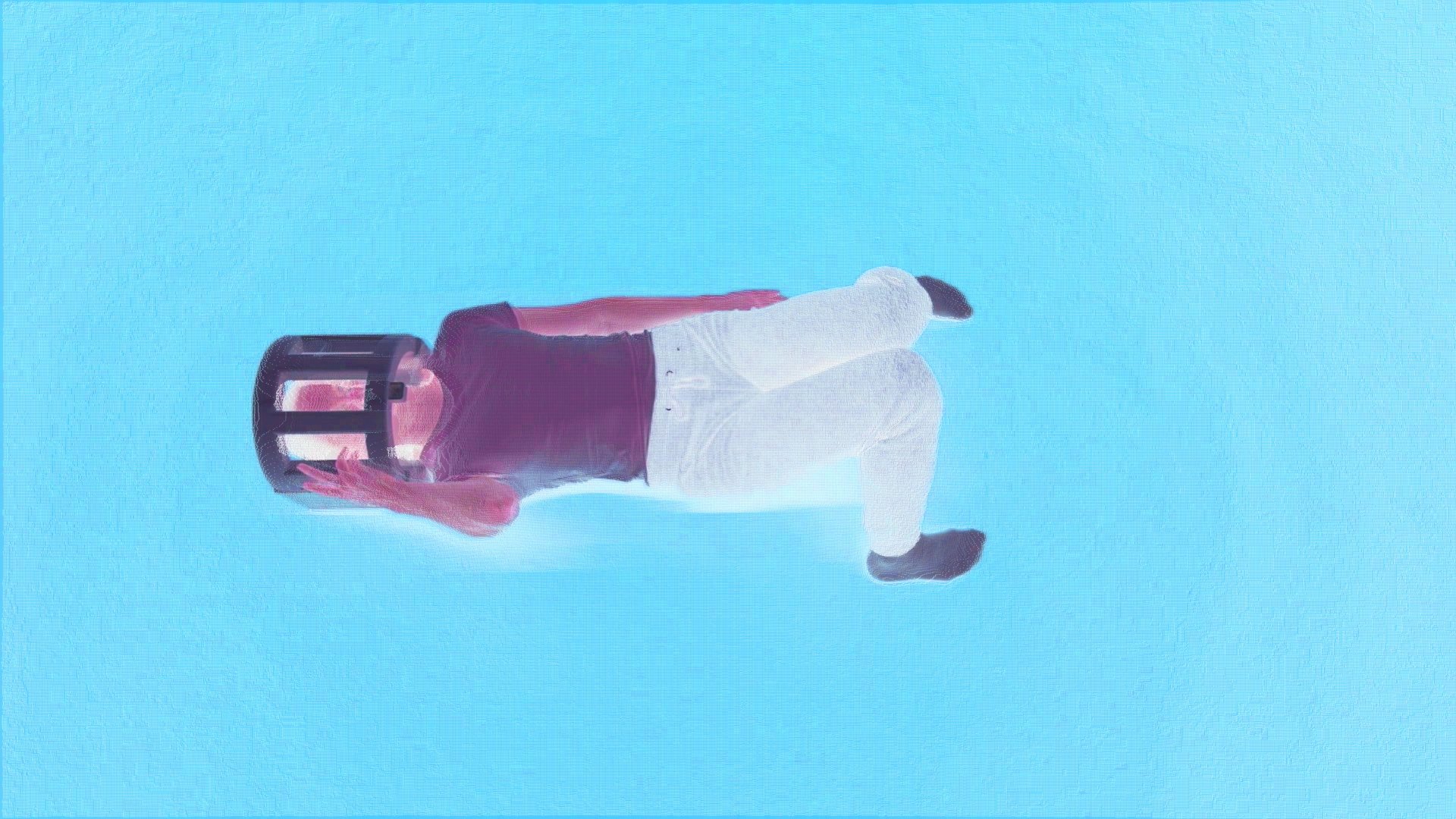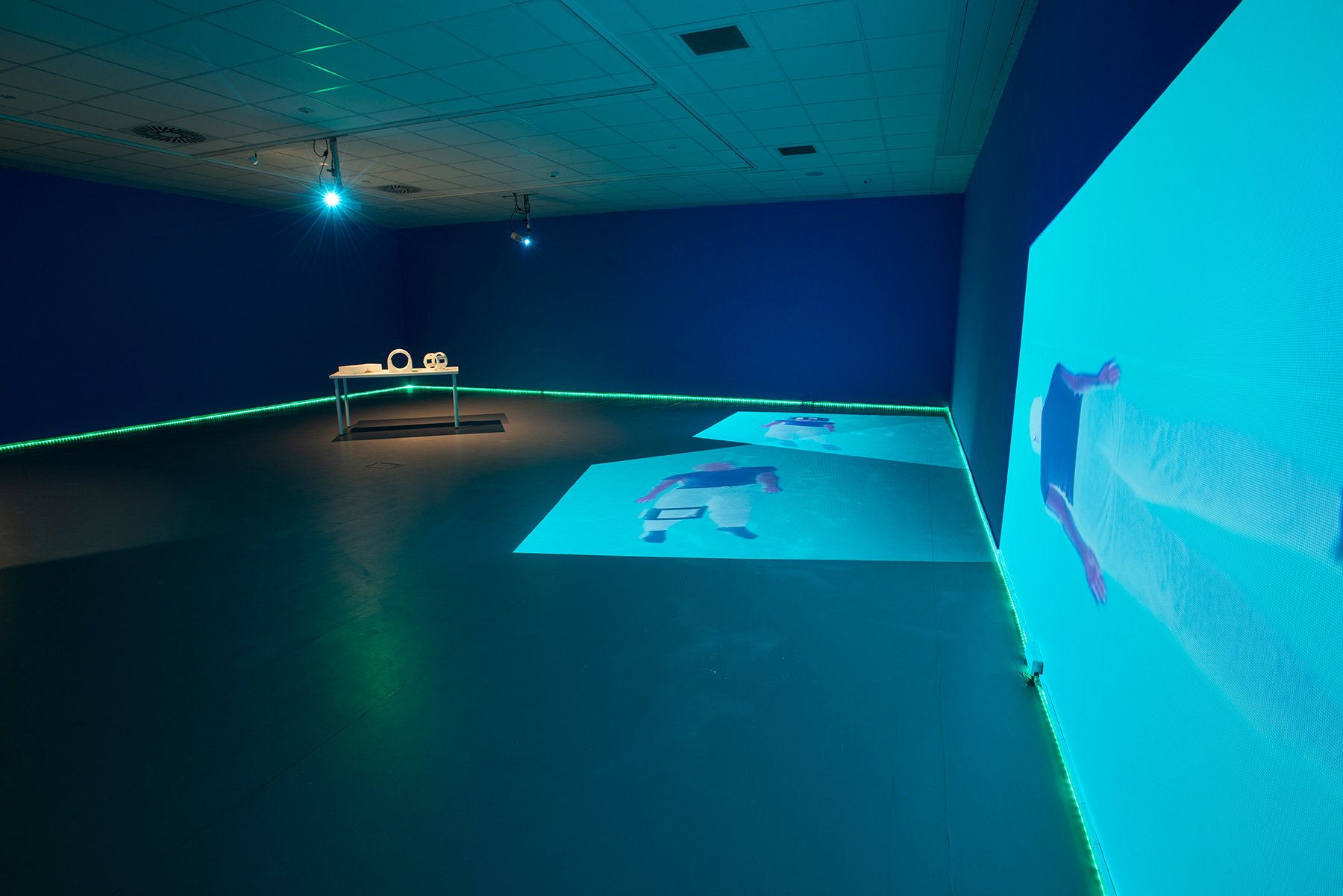
IMMOBILE CHOREOGRAPHY
Immobile Choreography is an installation consisting of video projection, 3D prints, LED light and audio, which looks at the potential of imaginatively re-materialising the body in response to the next generation medical scanner, Fast Field-Cycling Magnetic Resonance Imaging (FFC-MRI).
Year: 2019
Exhibitions: ‘Immobile Choreography’ Suttie Art Space, Aberdeen Royal Infirmary (2019); ‘Screendance – Scotland’s Festival of Dance on Screen: UK Jury Award Finalist Programme’, CityMoves Dance Agency, Aberdeen (2021); ‘Dyscorpia 3.0: Future Intersections of the Body and Technology’ - Online exhibition (2021); ‘DANCINEMA - Dance & Cinema Festival’, USA/Canada - online screening programme (2022)
The Immobile Choreography artwork was commissioned by Grampian Hospitals Art Trust (GHAT) in partnership with University of Aberdeen’s Bio Medical Physics department, in response to the IDentIFY research project, developing the Fast Field-Cycling Magnetic Resonance Imaging (FFC-MRI) medical scanner. The installation imaginatively re-materialises the body in relation to the FFC-MRI process and apparatus; which makes immaterial our material bodies.
During the MRI/FFC-MRI scanning process the subject is required to remain as still as possible, to be scanned successfully. However, being immobile does not mean that we are empty of potential, imagination or actual movement on a molecular level (which the FFC-MRI influences and aligns). The Immobile Choreography artwork poetically re-imagines movement within the parameters of the scanner apparatus; speculating on what this movement might be and how this relates to the effect of the magnetic resonance imaging process on our bodies.
Within the installation there are three video projections, presenting a digitally materialised figure performing short sequences of choreography, developed as a collaboration with professional dancer Freya Jeffs. The choreography was developed in response to the physical limitations of the FFC-MRI chamber, and consists of a series of small movements possible within the confines of this restrictive space. These movements are hinged to MRI coils, placed around the digital figure on head, breast and knee, respectively across the three videos. Additionally, the principal of Relaxation Time, a crucial factor and measurement within the FFC-MRI process, is used as a choreographic principal to drive the movement, and its animation. Relaxation Time is the measurement of time taken for the radio frequencies pulsed at the body, to be released from the cells. These physiologically imperceptible, mechanical pulses are re-imagined within the artwork as a rhythmic, choreographic animation, which matches the pulse of the FFC-MRI. The video projections are accompanied by the gentle clicking and whirring sounds of the FFC-MRI scanner.
A set of physical 3D printed MRI coils, (head, knee and breast) developed specifically for the FFC-MRI, are exhibited alongside the video projections and sound. In addition, an LED lighting system, tucked into the base of the gallery walls, cycles through changing hues that colour the entire space. Moving from green, to blue to yellow, the lighting is based on the system developed by researcher Dr Lionel Broche, for the FFC-MRI patient/subject to experience within the scanner chamber, which is intended to give a calm, durational atmosphere . These multiple installation elements create an immersive, distributed experience exploring the experiential, material and immaterial qualities of the body within medical imaging, specifically FFC-MRI technology.
A catalogue published by GHAT accompanied the exhibition at the Suttie Art Space, Aberdeen, with an introduction by Professor David Lurie, a critical text by Dr Silvia Casini and an auto-ethnographic text written by Beverley, detailing the experience of being scanned. The exhibition catalogue is available to buy here.
Credits: Freya Jeffs (dancer) Rebecca Milling (filming)
Funded by: IDentIFY - project Improving Diagnosis by Fast Field-Cycling MRI (EU Horizon 2020 Programme)






